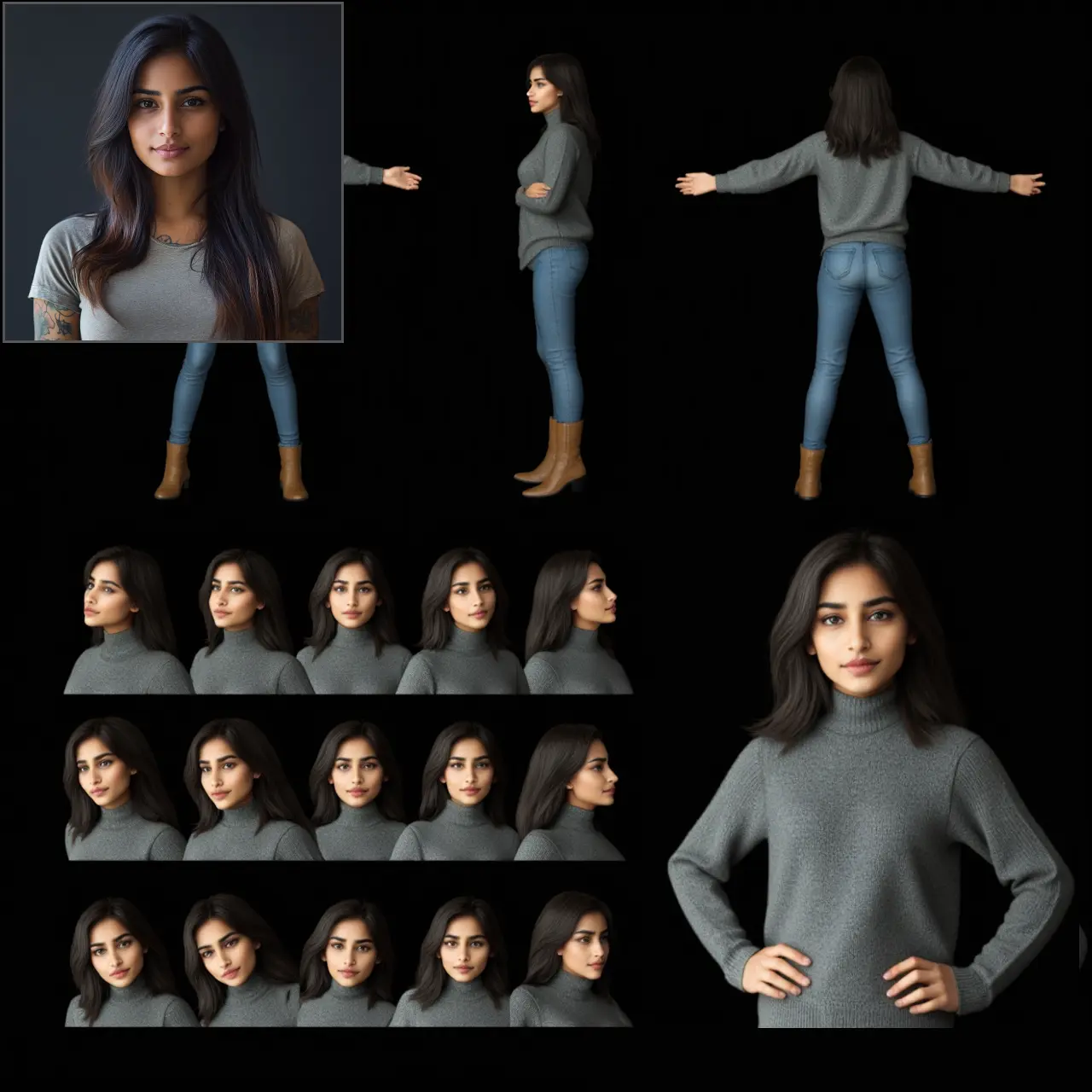ComfyUI Node: WanFunControlToVideo
WanFunControlToVideo
Categoryconditioning/video_models
ComfyAnonymous (Account age: 872days) Extension
ComfyUI Latest Updated
2025-05-13 Github Stars
76.71K
How to Install ComfyUI
Install this extension via the ComfyUI Manager by searching for ComfyUI- 1. Click the Manager button in the main menu
- 2. Select Custom Nodes Manager button
- 3. Enter ComfyUI in the search bar
Visit ComfyUI Online for ready-to-use ComfyUI environment
- Free trial available
- 16GB VRAM to 80GB VRAM GPU machines
- 400+ preloaded models/nodes
- Freedom to upload custom models/nodes
- 200+ ready-to-run workflows
- 100% private workspace with up to 200GB storage
- Dedicated Support
WanFunControlToVideo Description
Transform control data into video format with advanced conditioning techniques for dynamic video creation using AI technologies.
WanFunControlToVideo:
The WanFunControlToVideo node is designed to facilitate the transformation of control data into video format, leveraging advanced conditioning techniques. This node is particularly useful for AI artists who wish to create dynamic video content from static or control inputs, providing a seamless way to integrate various conditioning elements into video outputs. By utilizing this node, you can effectively manage and manipulate video creation processes, ensuring that the resulting videos are aligned with the desired artistic vision. The node's primary function is to encode control data into a video format, making it an essential tool for those looking to explore creative video generation using AI technologies.
WanFunControlToVideo Input Parameters:
positive
This parameter represents the positive conditioning input, which is used to guide the video generation process. It is crucial for defining the desired attributes or features that should be emphasized in the resulting video. The positive conditioning helps in steering the video output towards the intended artistic direction.
negative
The negative conditioning input serves as a counterbalance to the positive conditioning. It specifies the attributes or features that should be minimized or avoided in the video output. This parameter is essential for refining the video generation process by providing constraints that help in achieving a more focused and coherent result.
vae
The VAE (Variational Autoencoder) parameter is used to encode and decode video data, playing a critical role in the transformation of control inputs into video format. It ensures that the video output maintains high quality and fidelity by effectively managing the latent space representation of the video data.
width
This parameter defines the width of the video output in pixels. It impacts the resolution and aspect ratio of the resulting video. The width can be adjusted within a range, with a default value of 832 pixels, a minimum of 16 pixels, and a maximum determined by the system's maximum resolution capability.
height
Similar to the width parameter, the height defines the vertical resolution of the video output. It affects the overall aspect ratio and quality of the video. The height can be set within a specified range, with a default value of 480 pixels, a minimum of 16 pixels, and a maximum based on the system's maximum resolution.
length
This parameter specifies the duration of the video in frames. It determines how long the video will be and can be adjusted to suit the desired length of the output. The length has a default value of 81 frames, with a minimum of 1 frame and a maximum constrained by the system's capabilities.
batch_size
The batch size parameter controls the number of video samples processed simultaneously. It is important for managing computational resources and optimizing the video generation process. The batch size can range from 1 to 4096, with a default value of 1, allowing for flexibility in processing multiple video outputs at once.
clip_vision_output (optional)
This optional parameter allows for the inclusion of CLIP vision output data, which can enhance the video generation process by providing additional visual context or guidance. It is useful for integrating external visual information into the video output.
start_image (optional)
The start image parameter is an optional input that specifies an initial image to be used at the beginning of the video. It helps in setting the initial visual context or theme for the video, providing a starting point for the video generation process.
end_image (optional)
Similar to the start image, the end image parameter is an optional input that defines the final image to be used at the end of the video. It is useful for concluding the video with a specific visual theme or context, ensuring a coherent and complete video output.
WanFunControlToVideo Output Parameters:
positive
The positive output parameter represents the conditioned video data that aligns with the positive attributes specified in the input. It is crucial for understanding how the positive conditioning has influenced the final video output, providing insights into the effectiveness of the conditioning process.
negative
The negative output parameter reflects the conditioned video data that corresponds to the negative attributes specified in the input. It helps in evaluating how well the negative conditioning has been applied, ensuring that undesired features are minimized in the final video.
latent
The latent output parameter provides the encoded latent space representation of the video data. It is essential for understanding the underlying structure and features of the video, offering a compact and efficient representation that can be used for further processing or analysis.
WanFunControlToVideo Usage Tips:
- Experiment with different combinations of positive and negative conditioning inputs to achieve the desired artistic effect in your video outputs.
- Adjust the width, height, and length parameters to optimize the resolution and duration of your video, ensuring it meets your specific project requirements.
WanFunControlToVideo Common Errors and Solutions:
"Invalid VAE input"
- Explanation: This error occurs when the VAE parameter is not properly configured or is incompatible with the input data.
- Solution: Ensure that the VAE input is correctly set up and matches the expected format for the video generation process.
"Resolution exceeds maximum limit"
- Explanation: This error indicates that the specified width or height exceeds the system's maximum resolution capability.
- Solution: Adjust the width and height parameters to fall within the allowable range, ensuring they do not exceed the system's maximum resolution limits.
WanFunControlToVideo Related Nodes
RunComfy is the premier ComfyUI platform, offering ComfyUI online environment and services, along with ComfyUI workflows featuring stunning visuals. RunComfy also provides AI Playground, enabling artists to harness the latest AI tools to create incredible art.




